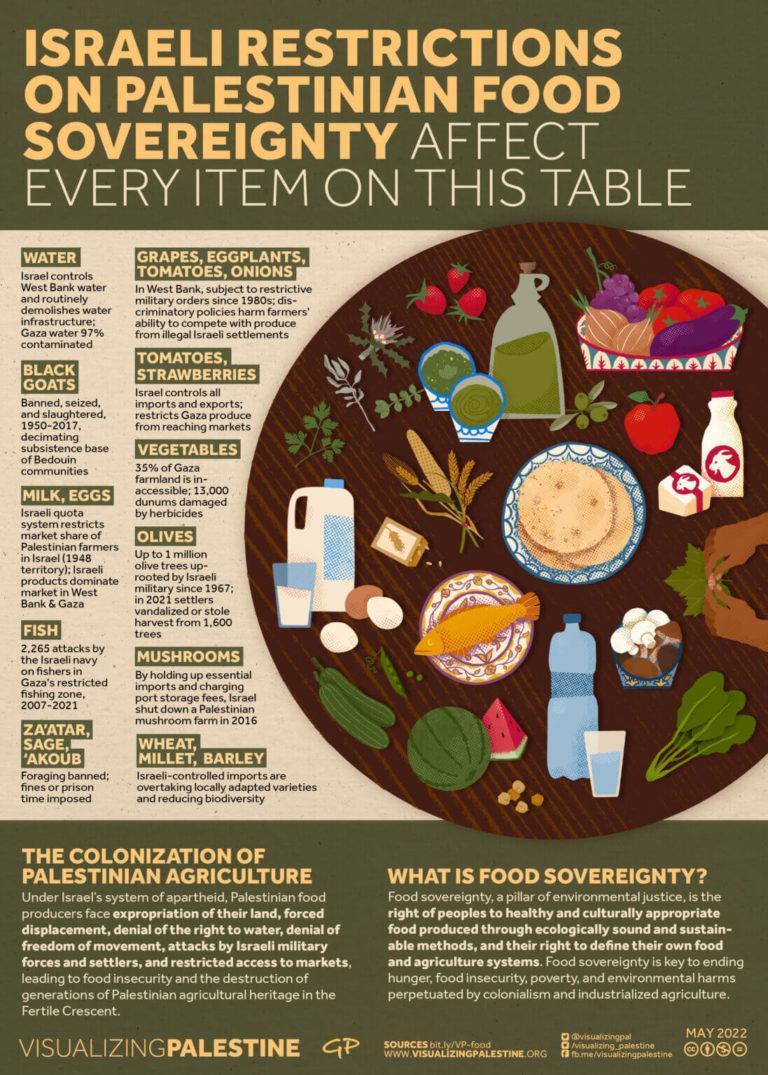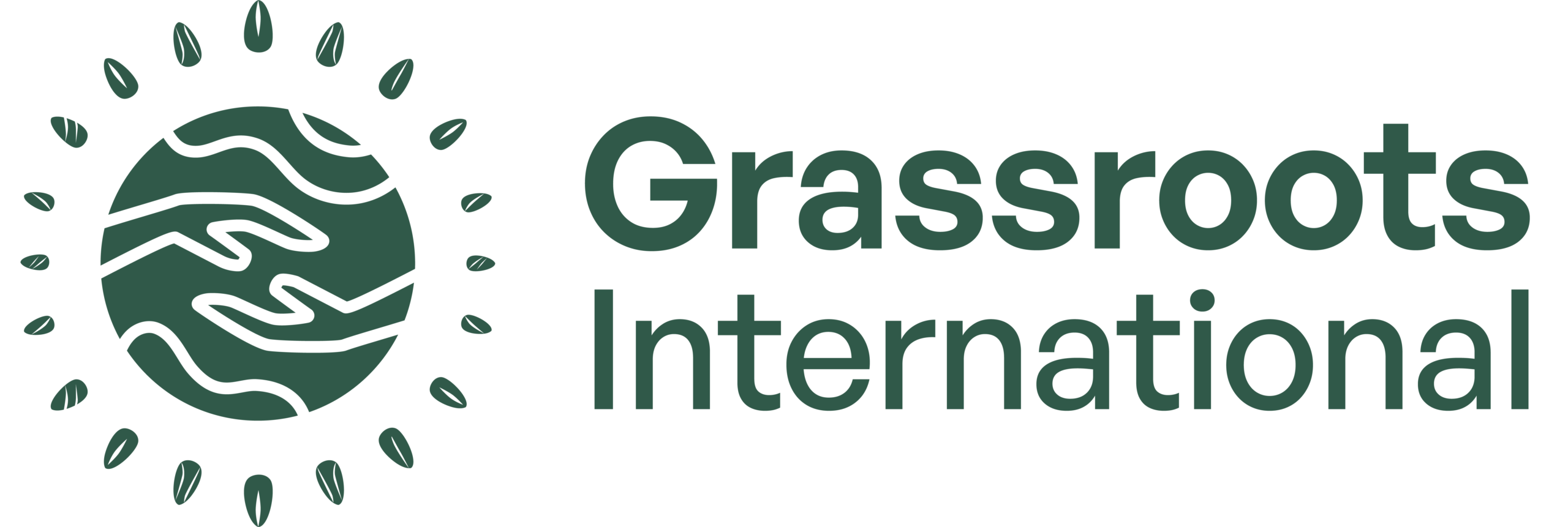GRAPHIC: Restrictions on Palestinian Food Sovereignty
Palestine is a food sovereignty and food justice issue! Our allies at Visualizing Palestine show how Israeli apartheid has affected every item on the food table.
Water restrictions, agriculture laws, military attacks on fisherfolk, the bulldozing of ancestral olive trees… these are just some of the many ways Israel has colonized Palestinian agriculture. We stand with Palestinians trying to win their food sovereignty and liberation.

FROM VISUALIZING PALESTINE:
In this visual, we explore various ways that Israeli policies of settler colonialism and apartheid deny Palestinian food sovereignty. During the Nakba in 1948, Palestinian refugees lost some 4.6 million dunums of farmland, which the Israeli state quickly appropriated for Jewish-only agricultural settlements.
The Ongoing Nakba continues to take a heavy toll on farmers, fishers, and pastoralists across historic Palestine. In besieged Gaza, 35% of agricultural land is inaccessible due to Israeli military measures. In the occupied West Bank, 63% of agricultural land is under complete Israeli control in Area C, with Palestinian rural communities in Area C being some of the most vulnerable to Israeli policies of forced displacement. Israel’s wall cuts off more than 10% of the West Bank, forcing thousands of Palestinian farmers to constantly petition Israeli authorities for permits to access their own land beyond the wall.
For more information on the intersection of self-determination and food sovereignty, read our post here.

